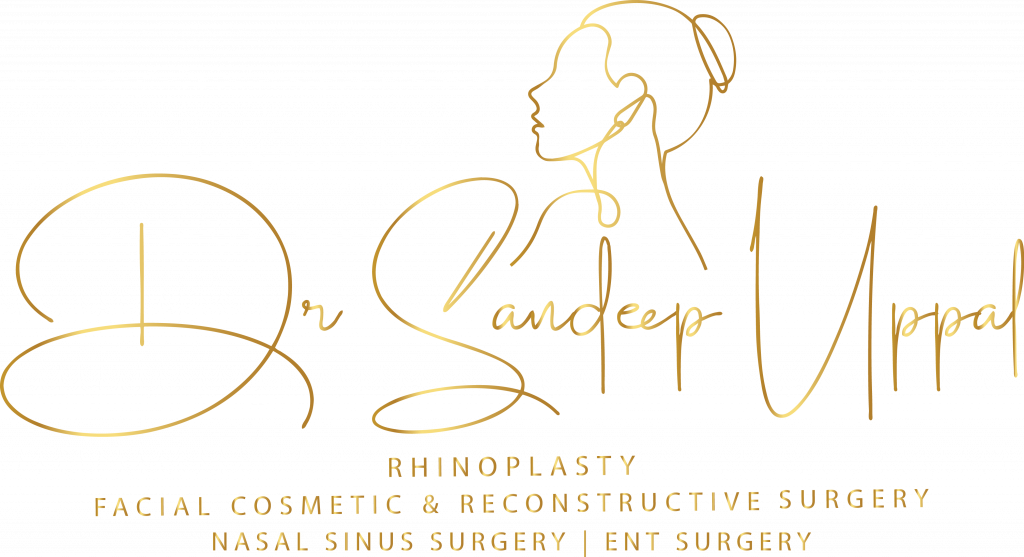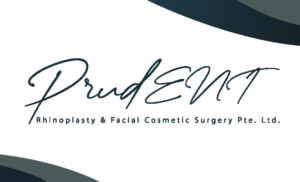Restoring Ear Health | Addressing Eardrum Perforations
WHAT IS THE EARDRUM?
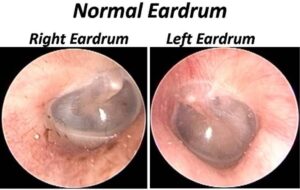
The eardrum, also known as the tympanic membrane, is a vital component of the ear, acting as a barrier and a resonator to transmit sound waves from the outer wear to the middle ear. When damaged or perforated, it can lead to hearing loss, infections, and discomfort. For those experiencing these complications, myringoplasty offers a restorative solution, improving both ear function and quality of life.
WHAT CAUSES EARDRUM PERFORATION?
Eardrum perforation can result from several factors:
– Acute Ear Infection: Acute ear infections can burst the eardrum, leading to holes or perforations.

Chronic Ear Infection: Chronic ear infections can erode the eardrum, leading to holes or perforations
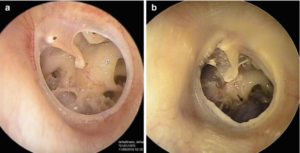
– Injury or Trauma: Direct impact, sharp objects, or sudden pressure changes (e.g., explosions, diving, or air travel) can damage the eardrum.
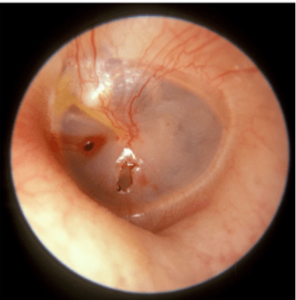
– Sudden Loud Noises: Exposure to very loud sounds can cause the eardrum to rupture.
– Medical Interventions: Certain procedures, such as the insertion of ventilation tubes, may occasionally lead to perforations.
Minor perforations may heal independently, but larger or symptomatic perforations typically require surgical repair through myringoplasty.
WHY IS MYRINGOPLASTY NEEDED?
Myringoplasty is recommended for those with symptomatic eardrum perforations, offering benefits such as:
– Improved Hearing: Repairing the eardrum can significantly restore hearing affected by the perforation.
– Reduced Infections: The intact eardrum provides a barrier to bacteria and prevents water entry, reducing the risk of recurrent ear infections.
– Enhanced Ear Health: Restoring the eardrum’s integrity promotes overall ear health and can alleviate ear discomfort and pain.
ALTERNATIVE TREATMENTS
While myringoplasty provides a permanent solution, some may opt for non-surgical alternatives to manage symptoms temporarily:
– Ear Protection: Preventing water from entering the ear (e.g., with earplugs) can reduce infection risk in perforated ears.
– Antibiotic Ear Drops: For those with infections, antibiotic ear drops can help manage symptoms.
– Hearing Aids: Temporary amplification devices may help with hearing loss associated with eardrum perforation.
These alternatives, however, do not resolve the structural issue of the perforation.
CONSEQUENCES OF NOT HAVING A MYRINGOPLASTY
Choosing not to repair an eardrum perforation when indicated can lead to ongoing issues:
– Persistent Hearing Loss: Without repair, hearing may remain compromised.
– Frequent Infections: An open eardrum increases susceptibility to infections, especially with water exposure.
– Chronic Ear Discomfort: Ongoing symptoms such as pain or ear discharge can impact quality of life.
CONSULTATION PROCESS AND PRE-OPERATIVE ASSESSMENT
– Consultation Process: Initial consultation includes a detailed history, examination, and hearing tests. Dr. Sandeep will discuss symptoms, goals, and expectations.
– Pre-Operative Assessment: Prior to surgery, additional evaluations may include ear endoscopy, nasal endoscopy, hearing tests and sometimes ear imaging (CT scan if needed) to assess ear structure.
UNDERSTANDING THE MYRINGOPLASTY SURGICAL PROCESS
Myringoplasty is a surgical procedure designed to repair a perforated (hole) eardrum, also known as the tympanic membrane. This surgery is typically performed under either general anesthesia (where you are asleep) or local anesthesia (where only the ear area is numbed). Your doctor will discuss the most suitable type of anesthesia for you before the surgery.
BEFORE SURGERY
1.Preparing for Surgery: You may be advised to stop taking certain medications that could increase the risk of bleeding, such as aspirin or anti-inflammatory drugs, vitamin E and herbal medications. It is also essential to avoid food and drink for several hours before the procedure if you are receiving general anesthesia.
- Day of Surgery: On the day of the procedure, you will arrive at the hospital or clinic. A nurse will guide you through pre-operative preparations, such as changing into a surgical gown. If you are feeling nervous, please know our team is here to support you every step of the way.
THE MYRINGOPLASTY PROCEDURE
1. Accessing the Eardrum
– Ear Canal Approach: For smaller perforations, Dr. Sandeep may access the eardrum directly through the ear canal. Endoscopic techniques may be used in suitable patients.
– Incision in front of the ear: For small posteriorly placed perforations, a small incision may be made at the junction between the top of front part of the ear and the cheek to reach the ear drum.
– Incision Behind the Ear: For larger perforations or if better access is needed, a small incision may be made behind the ear to reach the eardrum.
2. Grafting Material
A small piece of tissue, often taken from an area close to the ear (like a muscle sheath called the temporalis fascia or covering of the cartilage of the ear – tragal perichondrium), is used as a graft to patch the hole in the eardrum. This tissue will help close the perforation and eventually heal to become part of the new eardrum.
3. Placing the Graft
The graft is carefully positioned to cover the hole in the eardrum. It is typically held in place with absorbable packing material that supports it as it heals. This packing dissolves over time, so it does not need to be removed.
4. Closing Incisions (if any)
If an incision was made behind the ear, it will be closed with sutures. These sutures are usually dissolvable and will not need to be removed. If non-dissolvable sutures are used, they will be removed after one week.
5. Completion
The entire procedure usually takes about 1 to 2 hours, depending on the extent of the repair needed. Afterward, you will be taken to a recovery area to be monitored as you wake up from anesthesia.
AFTER SURGERY: WHAT TO EXPECT
- 1. Recovery Room: You will spend some time in the recovery room, where our team will monitor you to ensure you are comfortable and stable after anesthesia.
- Going Home: Myringoplasty is usually an outpatient procedure, which means you can go home the same day. However, you will need someone to drive your home, as you may feel drowsy or tired from the anesthesia.
- Pain and Discomfort: You might experience mild pain or discomfort in your ear, which can be managed with prescribed pain medications. It is normal to feel a little fullness or pressure in the ear as it heals.
- Protecting Your Ear: It is crucial to keep the ear dry during the healing process. Avoid getting water in your ear while bathing or showering. You may also be given ear drops or antibiotics to prevent infection.
- Avoiding Pressure Changes: To protect your ear while it heals, avoid activities that can cause rapid pressure changes, like flying, swimming, or lifting heavy objects for 6 weeks, if possible. Avoid blowing your nose forcefully, as this can affect the healing graft.
- Follow-Up Appointments: You will have several follow-up appointments with Dr. Sandeep to monitor your healing and check that the graft has integrated successfully with your eardrum. During these appointments, any packing material will be carefully removed, and your ear health will be assessed.
POTENTIAL RISKS AND COMPLICATIONS OF MYRINGOPLASTY
Most patients experience successful outcomes after myringoplasty, with improvements in hearing and fewer ear infections. However, as with any surgery, there are risks considering. These include:
– Bleeding: Minor bleeding may occur postoperatively.
– Infection: Although rare, postoperative infections may develop.
– Hearing Changes: Some patients may experience minor hearing changes after surgery.
– Tinnitus: Ringing in the ear can sometimes follow myringoplasty, although this is generally temporary.
– Dizziness or Balance Issues: Rarely, some patients may experience temporary balance disturbances.
– Failure of the Graft: In some cases, the eardrum may not fully heal, requiring additional intervention.
IMPROVE YOUR EAR HEALTH WITH DR. SANDEEP’S EXPERT MYRINGOPLASTY!
Our team, led by Dr. Sandeep Uppal, is dedicated to restoring ear health and function through myringoplasty. With a focus on precision and patient care, we strive to improve hearing and reduce infection risks, enhancing your quality of life.
Our goal with myringoplasty is to restore your ear health, improve hearing, and reduce the frequency of infections. Dr. Sandeep’s expertise in ear surgery, combined with his personalized approach to patient care, ensures a comfortable, safe experience with successful outcomes.
If you have any questions or concerns about the procedure, please do not hesitate to ask. We are here to help you every step of the way, from consultation to recovery.
Schedule a consultation with Dr. Sandeep to discuss a personalized treatment plan for your needs. Start your journey to better hearing and ear health today!
